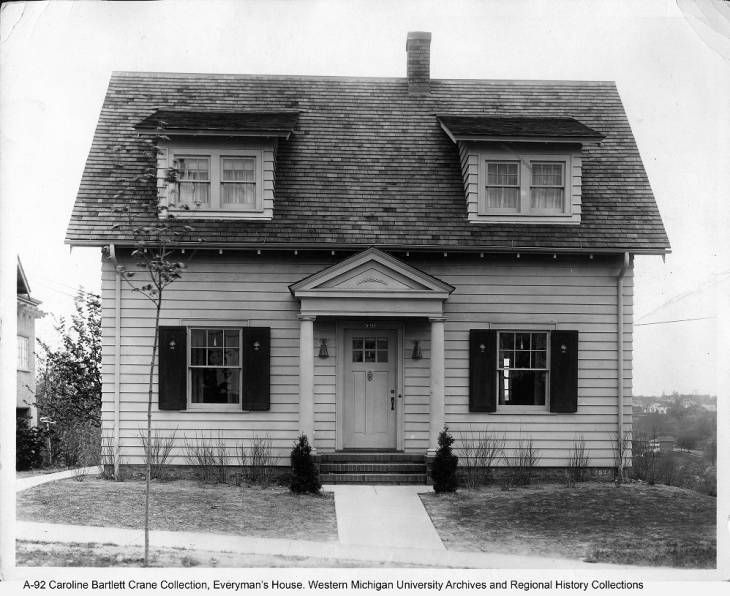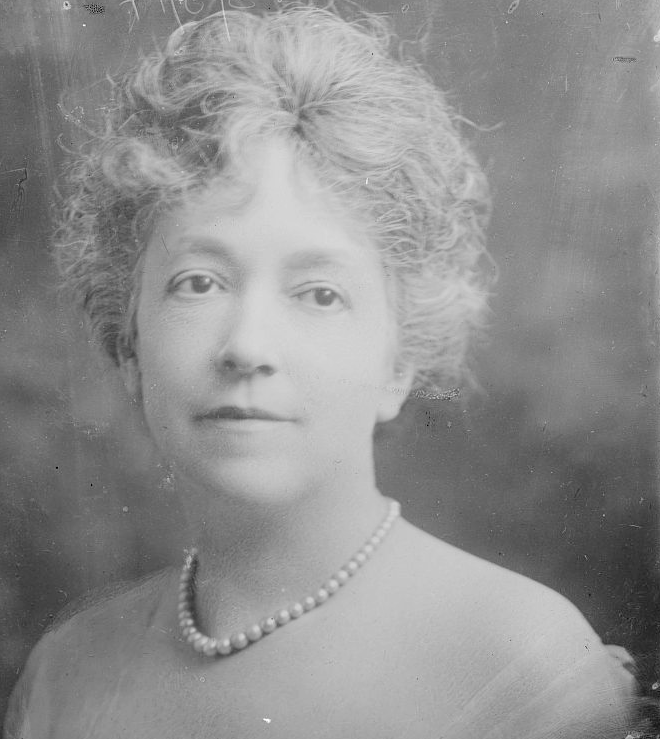How America Tidied Up Before Marie Kondo
From the Progressive Era’s social hygiene movement to Netflix self-help reality television
:focal(445x123:446x124)/https://tf-cmsv2-smithsonianmag-media.s3.amazonaws.com/filer/72/c3/72c3a834-209f-4a5e-b96b-f52fc1a891ce/woman.png)
If you don’t already know, “Tidying Up with Marie Kondo,” starring the titular Japanese organizational icon who literally wrote the book on the subject, is the new Netflix show that is causing people to run to libraries, Goodwill stores, consignment shops and—while not Kondo-sanctioned—the Container Store, in an effort to rethink their household items and rid themselves of objects that don’t spark tokimeku, or joy.
Kondo first published The Life-Changing Magic of Tidying Up to rave reviews in Japan back in 2011. In an interview with the New Yorker’s Barry Yourgrau, author and photographer Kyoichi Tsuzuki suggested that the rise of “Uniqlo, Muji, and all those corporations” selling fast fashion—“You wear them for a season, then throw them away”—might be one reason why Kondo’s organizational star shone so brightly in that cultural moment. After all, her KonMari Method (stylized that way because in Japan the given name follows the surname) doesn’t just give you permission to discard items you no longer find joy in, but suggests you’re actively hurting yourself if you hold onto that wrinkled polyblend top burning a hole in your dresser.
A similar case could be made for why Kondo’s book was received so warmly in the United States after it was translated into English in late 2014. The cult of Kondo that followed led to a pictorial sequel of sorts in 2016, and now, the aforementioned reality show in which Kondo visits eight families in the Los Angeles area, giving them permission to declutter their lives from the outside in.
Whether intentional or not, Los Angeles is a fitting location to film a show about decluttering. Less than a decade ago, the University of California, Los Angeles’ Center on Everyday Lives of Families (CELF), completed a nine-year project in the greater Los Angeles Area, documenting the households of more than 30 dual-income, middle-class families with school-age children to produce a major study on the material culture of suburban American homes.
"For more than 40,000 years, intellectually modern humans have peopled the planet, but never before has any society accumulated so many personal possessions," writes the interdisciplinary team in the 2012 book Life at Home in the 21st Century: 32 Families Open Their Doors. Despite the fact that suburban households, particularly in the sprawl of Los Angeles County, are known for being roomy—“refrigerators are larger than elsewhere on the planet”—they found “food, toys and other purchases exceeding the confines of the home and overflowing into garages, piled up to the rafters with stockpiled extra ‘stuff.’” In the first house, they chronicled 2,260 visible possessions in the first three rooms alone before they stopped counting.
The conclusion of the study won’t surprise you: American households have a lot of clutter.
Definitions of what constitutes clutter vary widely. “For centuries, as a result of deprivation and scarcity, both humans and animals have hoarded and accumulated not only foodstuffs but also objects,” writes Jo Cooke, director of Hoarding Disorders UK, in Understanding Hoarding. Hoarding, however, is associated with someone who has a mental health condition that makes getting rid of possessions deeply painful. Someone who is capable of ridding themselves of the extraneous if they only devoted themselves to doing so is the person Kondo is targeting.
She’s not the first to do so.
In the 19th century, the English word “mess” evolved linguistically. As ethnologist Orvar Löfgren chronicles for the journal Consumption Markets & Culture, from its origin as “a place in which food was served, or a dish of (mixed) food,” “mess” acquired a more negative connotation, sliding from unsavory food concoctions to occupying a more figurative negative space in language, reaching “a condition of untidiness” in 1851, before it “colonized new arenas: messy persons, messy homes or lives.”
The Progressive Era, which spanned from 1890s to the 1920s, had something to say about those messy persons, homes and lives. “Steering this revolution in personal and household cleanliness,” chronicles scholar Scott Herring in The Hoarders: Material Deviance in Modern American Culture, were the hygiene reformers, or home economists who advocated for a clean-living movement. Women, for they were often women, most middle-class and white, called on homemakers to vanquish germs (which advancements in technology had only recently rendered visible) from their houses and cast away the clutter. Often times, however, clutter wasn’t just clutter. Instead, as the reformers encouraged an “orderly appreciation” of household possessions, in their quest to “nudge Americans into good housekeeping,” their message, like much of the hygiene reform movement itself, was cast through a racist, anti-immigrant lens, making clutter a stand-in for possessions that didn’t fit what Herring described as the “ideas of cleanliness, sanitation, and middle-class white material culture.”
The fearmongering over immigrants’ possessions, interestingly, came right around the time that the American middle-class household was acquiring more stuff than it had before. As journalist Josh Sanburn charts in a 2015 feature on clutter for TIME magazine, the rapidly industrializing nation fed the growth and widespread adoption of Montgomery Ward and Sears catalogues and brick-and-mortar department stores. This in turn led to a “new consumerism” that “offered a uniquely American idea that you could aspire to a different social class through acquiring.”
Perhaps it’s not surprising then that by 1925, American Unitarian minister, suffragist, civic reformer, educator and journalist Caroline Bartlett Crane was adopting a distinctly Kondo-esque line of questioning when it came to home design: “Are our houses cluttered with disguised liabilities, rooms we don’t effectively use, pictures we don't see (and likely, are not worth seeing), useless furniture and bric-a-brac we haven’t the courage to get rid of?”
Crane, who was regarded as “America’s housekeeper,” won a fascinating 1924 contest organized by a campaign called “Better Homes in America.” The initiative was designed to “cure home neglect through an educational program that combined the nineteenth-century republican values of thrift and self-reliance with twentieth-century household technology,” scholar Janet Hutchison, writes in the journal Perspectives in Vernacular Architecture. Each year, it sponsored a national contest for the model house that best met a modern woman’s demands, and Crane’s winning bid, “Everyman’s House,” ended up inspiring a “new style of architecture.” While her book about her philosophy around the design didn’t become a Kondo-like phenomenon, upward of 20,000 people toured the “little house” when it debuted, and Herbert Hoover, at that time Secretary of Commerce and the president of the Better Homes in America, campaign praised it for "reaching the mass of the people."

Crane’s call for less was a pushback of sorts against the excesses of the Victorian age, a call led by household advisors that can be traced back to the 1880s, according to National Building Museum curator Sarah A. Leavitt in From Catharine Beecher to Martha Stewart: A Cultural History of Domestic Advice. These experts, Leavitt writes, “attacked bric-a-brac over a period of half a century.”
Elsie de Wolfe, the woman who made an art of early interior design, was one of them. In her influential 1911 book The House in Good Taste, she reminds readers to remember what was most essential: “Simplicity!” That advice was echoed by other experts of the day who moralized what the home should and shouldn’t be. “‘No junk!’ is the cry of the new interior,” one critic wrote in 1916. In a line that still feels cutting, she suggested that "homes which cannot free themselves from the clutter of trivial and futile objects are mute declarations of the insincerity of their creator's pretensions to good taste and refinement.”

So why didn’t a proto-Kondo philosophy pervade the American home? Despite the tradition of “expert advice” in the domestic space—one that Leavitt explores spanning the Beecher women, especially Catharine, in the 1800s (though it’s her sister-in-law Eunice White Beecher who gets the credit for telling her readers that the wrong choices of home décor “will make you gloomy and dissatisfied every time you see [it]”) all the way to Martha Stewart—their words didn’t necessarily translate to their readership. “[T]hough women read their advice,” Leavitt writes, “they ignored it much of the time and continued to decorate their houses with bows and figurines.”
These experts did lay the groundwork, however, for the formalized professional organizer to emerge in the 1970s, Herring observes in The Hoarders. Leading the way was Stephanie Winston, founder of the Organizing Principle, and the 1978 manual “Getting Organized: The Easy Way to Put Your Life in Order.” He points to a 1974 New York Times article explaining her profession, which she conceived a “little less than a year ago,” somewhat breathlessly: “She’ll arrange jumbled files, books and financial records, devise efficient use of space in closets, cabinets and other storage areas, and plan personal and household budgets.”
“I had no idea of how many people felt truly uncomfortable because some system in their lives‐ wasn't working,” Winston said. “For some, the act of putting things in order is cathartic.”
The article describes one of her recent clients, a work-from-home psychotherapist, who could as well have starred in “Tidying Up With Marie Kondo.” “When she called me, things were a mess,” Winston told the Times. “All her correspondence, business and personal, bills and professional materials were tucked into shopping bags. She had no visible system for maintain her client accounts, for keeping track of her finances, for using her time efficiently. And the disarray was causing her considerable distress.”
This marked a new epoch, and profit opportunity, for tidying up in the U.S.; by 1983, the National Association of Professional Organizers (NAPO) had launched. “This ‘new breed’ of clutter specialists would expand in number by the late 1990s,” Herring explains, morphing into the recognizable personalities we see today starring in shows on TLC, HGTV, A&E and, now, Netflix.
A whole language exists these days to describe clutter. The “Clutter Image Rating,” developed by Randy Frost and the International OCD Foundation, uses a series of nine photographs depicting clutter, to offer an “unambiguous marker of the seriousness of the problem and clarifies the word ‘clutter’ in the world of hoarding,” explain researchers Gail Steketee and Randy Frost in Stuff: Compulsive Hoarding and the Meaning of Things.
Kondo’s show is just the latest in a genre that ranges from “Clean Sweep” to “Hoarders”; "Mission: Organization" to newly appointed lifestyle guru Reese Witherspoon’s upcoming organizing show “Master the Mess.” Each speaks to the public, and counsels them on what to do about all their clutter.
In Kondo’s case, she provides viewers with a five-step process to tidy up, starting with clothing, moving onto books, paper, komono—defined as kitchen, bathroom, garage, and all things miscellaneous—and sentimental items.
“By tidying, you can sometimes ease the pain of the past or even start thinking about your future in a more positive way,” Kondo says in an episode helping one woman clean house after her husband’s death.
Kondo’s show premiered on New Year’s Day, a smartly timed rollout, but the best of resolutions tend to falter by February. Once more, we’re living through a new age of new consumerism, not one brought on by the catalogue orders and brick-and-mortar departments stores of the 1900s, but, as Sanburn’s 2015 TIME piece suggests, one of e-commerce led by Amazon.
It’s hard not to wonder if this time, the mission of Kondo and her reality TV show cohorts will resonate more loudly than the household advisors did in the 1900s, or if once again, the call to tidy up will be ignored by the public in favor of ordering their bows and figurines—now aided by the added convenience of one-click shopping.

